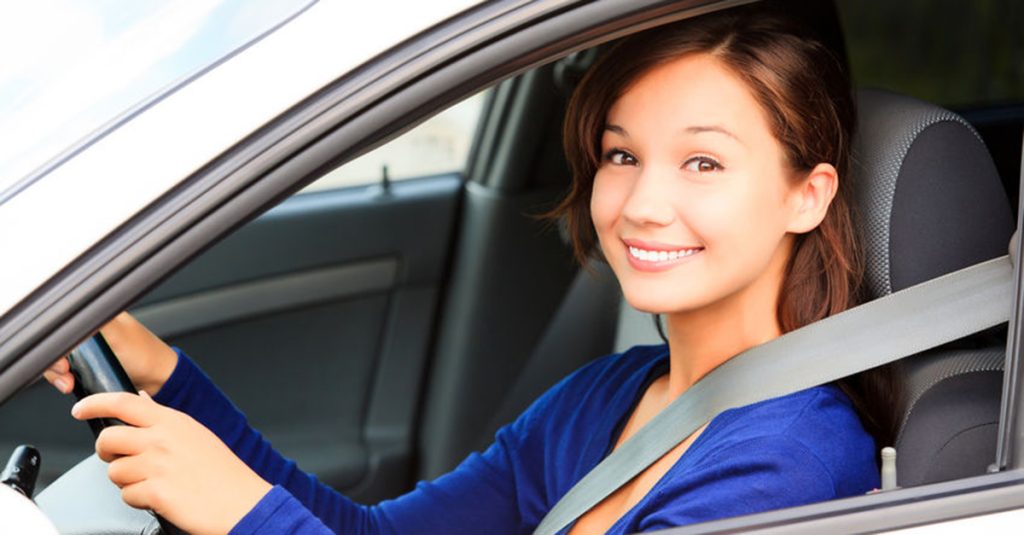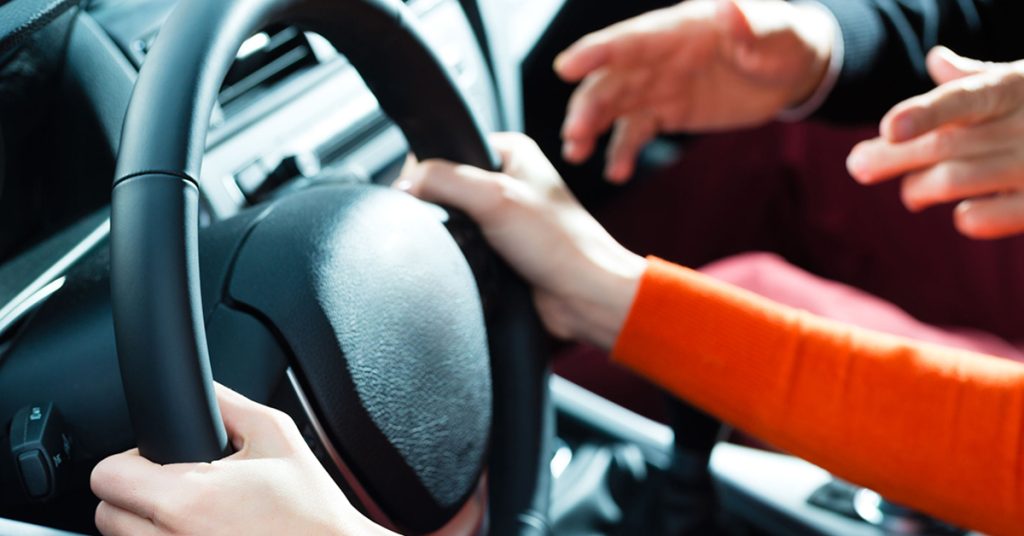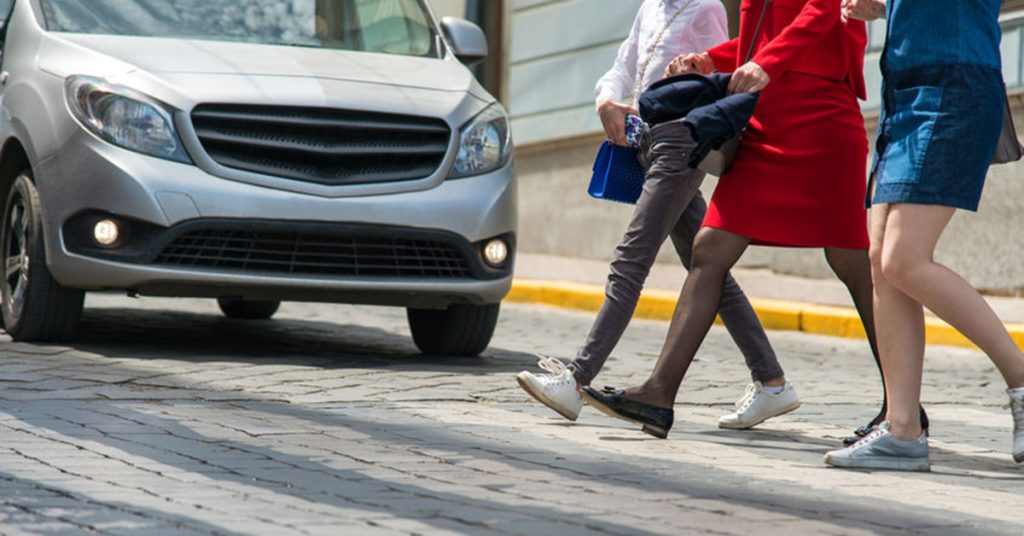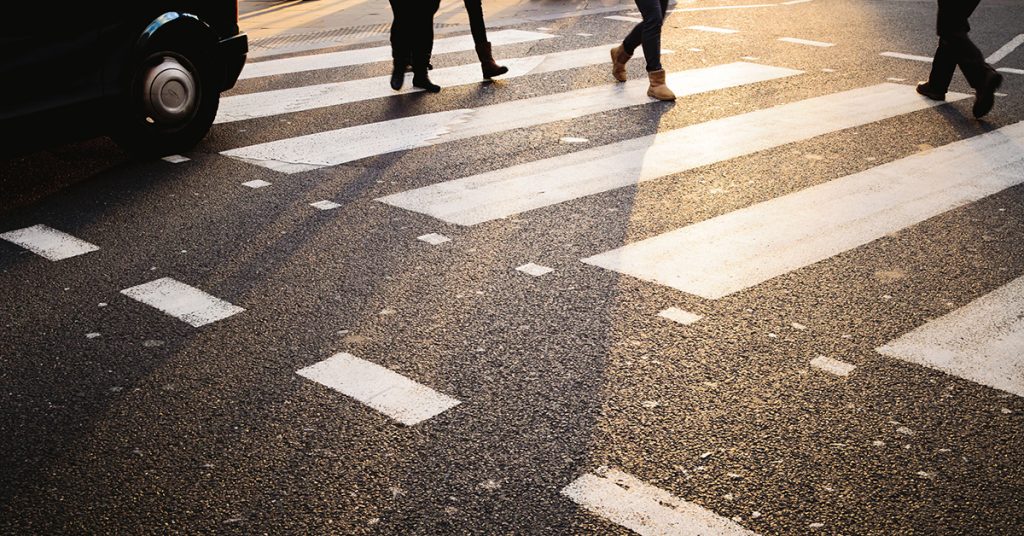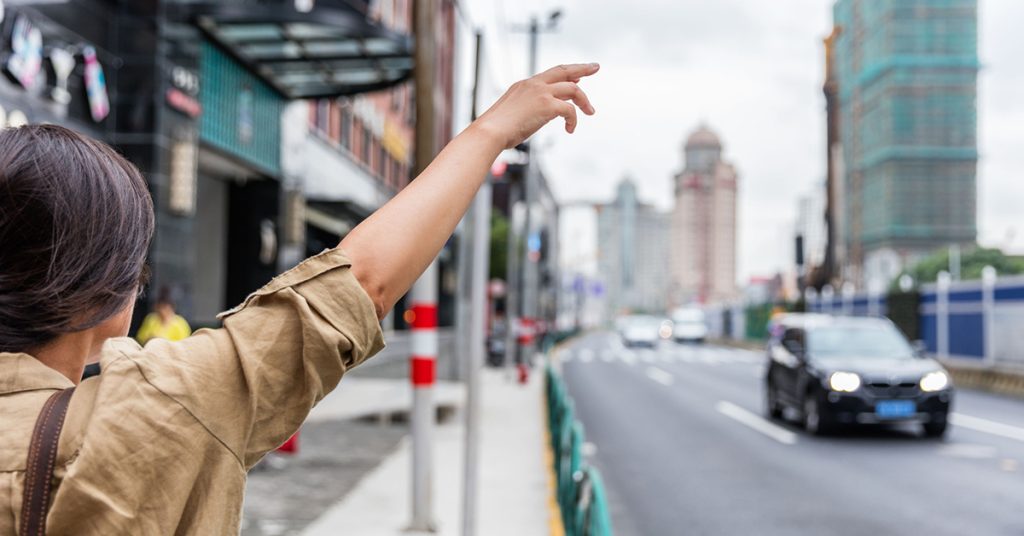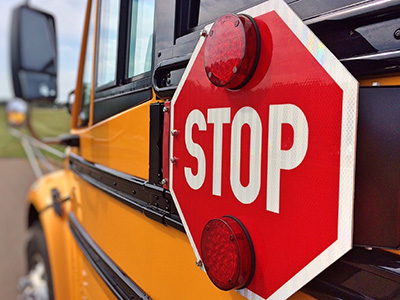Posts Tagged ‘“car accidents”’
For Teens, Driving Safely Starts With Seat Belts
Teen Driver Safety Week is Oct. 18-24, 2020. Breakstone, White & Gluck is sharing articles to encourage parents and teens to discuss safe driving decisions.
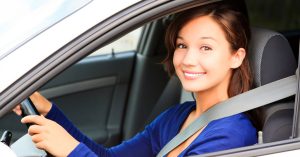 Seat belts are a simple step for safety. As a parent, you probably remind your child to buckle their seat belt before each ride. But when your teen becomes a licensed driver, you won’t always be there. Still, what you say matters. Teens are twice as likely to wear a seat belt as a driver or passenger when parents set rules and monitor their driving behavior, according to the Teen Driver Source website, which is operated by the Children’s Hospital of Philadelphia.
Seat belts are a simple step for safety. As a parent, you probably remind your child to buckle their seat belt before each ride. But when your teen becomes a licensed driver, you won’t always be there. Still, what you say matters. Teens are twice as likely to wear a seat belt as a driver or passenger when parents set rules and monitor their driving behavior, according to the Teen Driver Source website, which is operated by the Children’s Hospital of Philadelphia.
Tell your teen you expect them to wear a seat belt whenever they travel in a motor vehicle. This includes when they drive and when they are traveling as a passenger. As a second step, put this in writing. Find a teen driving safety agreement with your teen and state this is one of your expectations. If you catch your teen driving without their seat belt, you can step back their access to the keys until you have a discussion.
Seat belts are required by law. Wearing a seat belt is required by law in Massachusetts. Drivers and their passengers must both wear seat belts.
Seat belts protect against deadly force. The goal isn’t to scare your teen. But the reality is cars, trucks and other vehicles are heavy and powerful machinery. We all need to wear seat belts to protect against the potential force of a car crash.
Seat belts reduce the risk of fatal injury to front seat passengers by 45 percent, according to Teen Driver Source. They also reduce the risk of moderate to critical injury by 50 percent.
Seat belts also reduce the risk of ejection from the vehicle. Those who do not wear seat belts are 30 times more likely to be ejected from a vehicle during a traffic crash, according to Teen Driver Source. When a person is ejected from their vehicle, they are more likely to die in a crash. This was the case for 3 out of 4 people.
How seat belts prevent injuries. Seat belts are designed to spread crash forces across the stronger bony parts of the body, including the shoulders, rib cage and pelvis, according to the Institute for Highway Safety (IIHS). They are also designed to prevent occupants from being ejected from a vehicle.
Drivers and passengers should all wear seat belts – to protect themselves and each other. If there is an accident and one of the vehicle’s occupants is not wearing one, they could be ejected and increase the risk of injury to others in the vehicle.
In a frontal crash, drivers and front passengers are left at an increased risk for injury if the back-seat passengers are not wearing seat belts. Exposure to unbelted occupants increases the risk of injury or death to other vehicles by 40 percent, according to the IIHS.
More People Are Wearing Seat Belts in Massachusetts
The good news is more people appear to be wearing seat belts in Massachusetts. In 2018, the state conducted a seat belt usage observation study, reporting 81.58 percent of drivers and front outboard passengers were observed to be wearing seat belts. This was 7.9 percentage points over the year before and the highest ever observed rate in Massachusetts.
To reach this number, the state observed 28,265 drivers and front outboard passengers in 24,2145 vehicles at 147 observation locations. You can learn more by reading the study.
According to the IIHS and other organizations, states with primary enforcement seat belt laws have higher seat belt use rates. In 2019, the IIHS reported states with primary enforcement laws saw 91 percent seat belt use compared to 86 percent. Massachusetts has a secondary enforcement seat belt law, meaning police can stop drivers for traffic violations, then issue citations for failure to wear seat belts. But police cannot stop drivers just because they are not wearing seat belts.
If you are parent or teen, we hope this is good background information. The point is you should wear your seat belt every time you ride – and encourage others to do the same.
Free Legal Consultation – Boston Personal Injury Lawyers
With more than 100 years combined experience, Breakstone, White & Gluck fights for the rights of those injured by the negligence or wrongdoing of others. Our personal injury attorneys specialize in the handling of car accidents, truck accidents and bus collisions in the Boston area. If you have been injured, learn your legal rights. For a free legal consultation, call our attorneys at 800-379-1244 or 617-723-7676. You can also use our contact form.
To learn more about teen driving safety and other topics, please visit our Project KidSafe campaign page.
National Teen Driver Safety Week Offers Safety Reminders for Massachusetts Families
 Motor vehicle crashes are the leading cause of death for teens. Each year, National Teen Driver Safety Week highlights safety insights for families and teens. This year, the event runs from October 18-24th. We encourage you to follow the National Highway Traffic Safety Administration and Teen Driver Source for more information. Teen Driver Source is operated by the Center for Injury Research and Prevention at Children’s Hospital of Philadephia, which offers Facebook and Twitter feeds.
Motor vehicle crashes are the leading cause of death for teens. Each year, National Teen Driver Safety Week highlights safety insights for families and teens. This year, the event runs from October 18-24th. We encourage you to follow the National Highway Traffic Safety Administration and Teen Driver Source for more information. Teen Driver Source is operated by the Center for Injury Research and Prevention at Children’s Hospital of Philadephia, which offers Facebook and Twitter feeds.
According to the National Highway Traffic Safety Administration, the greatest dangers teen drivers face are: alcohol consumption, inconsistent or no seat belt use, distracted driving, speeding and driving with passengers in the vehicle. This year, COVID-19 has introduced a new concern. Teens are driving far less and risk losing core skills. This is where National Teen Driver Safety Week comes in as an important resource this year.
Driving Safety Contract. If you follow Teen Driver Safety Week, you may learn about teen driver contracts. You can also print this parent-teen driving contract from the Centers for Disease Control and Prevention (CDC). Make your own edits and ask your teen to sign as a condition for using your vehicle. Give your teen a copy of the document to file away and review. This is a good way to lay out expectations for your teens and what will happen if they violate the agreement.
Make Sure Teens Get Enough Driving Time. If teens are not driving as much during COVID-19, they risk falling behind on fundamental skills. To prevent this, encourage your teen to drive regularly. When you go out with your teen, split the driving responsibilities so you know they are logging at least some time behind the wheel and you can monitor their progress.
Hold back judgment and sharp comments if you see some of their skills have regressed. This may happen. Just help them get practice in where they need it. Take advantage of empty parking lots and slower times of the week. You can get them back on track.
Drive Around Town With Your Teen. When you can, walk and drive around your community with your teen, including during the morning and afternoon commutes. This gives your teen a preview of what may come when they pull out of the driveway alone. You may see more pedestrians and cyclists in areas. You may see parking changes and restaurants offering sidewalk service. Share observation with your teens and try to make helpful suggestions to help them drive safely and avoid car accidents.
Stress the Importance of Slowing Down. Speed is a factor in nearly 30 percent of all fatal crashes involving teen drivers, according to AAA. Teens often have a heavy foot on the gas pedal and this only changes as they gain experience. For now, if teens can simply slow down, they can significantly reduce their risk of a collision.
Start by helping your teen recognize speed limits because they are not always posted right in front of them. While they should have learned this in driver’s ed, new drivers can use a reminder from time to time. Massachusetts sets a default speed limit of 30 mph in thickly settled and business areas, unless posted otherwise or an individual community has opted to lower the speed to 25 mph. School zones and work zones are 20 mph.
Encourage your teen to travel at or below the speed limit, especially in residential neighborhoods. By doing so, they reduce their risk of causing a car accident due to inexperience in the first few months or year of driving. They reduce their chance of causing themselves or someone else serious injuries and all the emotions and stress.
Reduce Distractions. Slowing down is the most effective tool for safe driving. It’s also important to reduce distractions. This means setting aside cell phones and limiting conversation with passengers in the vehicle. Sure, your teen is going to engage in discussion with others in the car. But try to make conversation lighter and focus more on observation, such as, “I see cars backing up at the traffic light ahead” or “there is an ambulance coming.” Save heavy discussion for before or after the drive.
Safety Steps Near Pedestrians and Cyclists. Teens may struggle to drive near pedestrians and cyclists. Every few weeks, drive through school zones and busy areas with your teen again, just as a refresher. Show them how you stop at crosswalks for pedestrians and leave room in anticipation of pedestrians. Instead of chatting at traffic lights, use this time to show your teen how to check for cyclists. More and more people have been cycling over the past decade in Massachusetts. This likely increased during COVID-19 and will likely continue. The reality is cars are not the only vehicle on the roads. Cyclists have the right to travel in the road too. You can really help your teen by teaching them to look for cyclists.
Buckling Up. Teens and young adults have the lowest rates of seat belt use, according to the CDC. Almost half of all drivers age 15-20 who died in car crashes were not wearing seatbelts in 2017, according to the CDC. During COVID-19, your teen may go long periods of time without driving or traveling in the car. Remind your teen – and all your family members – to always buckle up.
Boston and Cambridge Car Accident Lawyers – Breakstone, White & Gluck
At Breakstone, White & Gluck, our Boston car accident lawyers have over 100 years combined experience representing those injured by negligent driving. If you have been injured in a car accident and someone else was responsible, learn your legal rights. For a free legal consultation, contact our attorneys at 800-379-1244 or 617-723-7676 or use our contact form.
Study: Teen Driving Accidents Claim More Than 7 Lives Each Day of Summer
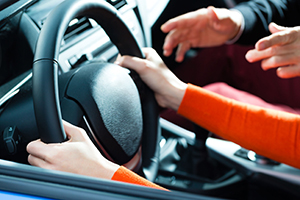 We know many Massachusetts parents regularly talk to their teens about safe driving to prevent car accidents. You should be commended for engaging in this often-stressful conversation.
We know many Massachusetts parents regularly talk to their teens about safe driving to prevent car accidents. You should be commended for engaging in this often-stressful conversation.
We urge you to continue on this summer. Helping teens understand the difference between appropriate and unsafe choices and build strong driving skills is a life-long investment in their safety and the safety of others.
Nationwide, teen driving crashes killed more than seven people each day of summer from 2008 to 2018, according to AAA Foundation for Traffic Safety. AAA recently released the 2020 “100 Deadliest Days” of driving report, once again warning teen drivers and parent to take extra precautions between Memorial Day and Labor Day.
Be aware of the unique risks this summer, AAA says. In response to the COVID-19 pandemic, many summer jobs and activities have been cancelled. With more free time, teens may be driving more. AAA urges parents to read its 2020 “100 Deadliest Days” report, and its Parent Coaching Guide, and to have teens sign a safe driving agreement. With this approach, parents can set clear expectations for teens and refer them to the agreement should they forget. If teens violate the terms of the agreement, they may lose driving privileges for a period of time.
Research on Teen Driving Crashes
Here are a few figures for parents to consider. AAA’s research found more than 70 percent of teen drivers age 16-18 had engaged in unsafe and illegal driving behaviors.
Seat belt Use
17 percent of teen drivers admitted to not wearing a seat belt.
Speeding
47 percent of teen drivers admitted to driving 10 mph over the speed limit on a residential street.
40 percent of teen drivers admitted to driving 15 mph on a freeway.
Texting and Cell Phone Use
35 percent of teen drivers admitted to texting while driving.
Other Driving Violations
More than 30 percent of teen drivers admitted to running red lights and aggressive driving. Meanwhile, 25 percent of teen drivers admitted to drowsy driving.
Parents can influence teens on some of these behaviors by developing a teen driving agreement (there are several available on the Teen Driver Source website). Your conversations with your teens are also essential.
Help Your Teen Drive Safely
Help your teen drive safely and avoid a car crash.
Many states have graduated licensing laws, including Massachusetts. Encourage your teen to follow the Massachusetts Junior Operator Law at all times. Under this law, teens are not allowed to use cell phones when driving in Massachusetts, not even under the new Massachusetts “hands-free” driving laws.
When they have a question, encourage them to ask, review their driver’s education materials or the Massachusetts Driver’s Manual. When drivers understand the law, they are more confident making decisions on the road.
Another opportunity is to drive together. Take turns in the driver seat. When you drive, take the opportunity to show your teen how you follow the speed limit. On a 30 mph street, this means driving 30 mph or less, not 35 or 40 mph. Tell your teen what you are doing and why.
Speed-related crashes are prevalent among teens. Simply slowing down and following other vehicles at greater distances can make a tremendous impact in reducing car accidents. At slower speeds, your teen has more time to stop and if they have a collision, injuries are likely to be less severe. Accident victims are more likely to survive a teen driving accident.
At the same time, parents should understand that when teens speed, they may be intentionally speeding and risk-taking. This is unacceptable. But often, the reason is driver inexperience. Teens need more practice using the gas and brakes, and you may need to explain that traveling “just” 5 mph or 10 mph over the speed limit is dangerous. In fact, you may need to do this a few times, also explaining that teens are more likely to cause injury when they speed and receive a speeding ticket which will impact their junior license.
To help your teen, be patient. Your goal is to demonstrate safe driving techniques and give them feedback when they make a good decision or make a mistake. Yet, if you are too critical, you will make your teen nervous and reluctant to drive with you. Tread lightly but firmly. It’s alright to take a break, but don’t stop trying.
Free Legal Consultation – Boston Car Accident Lawyers
At Breakstone, White & Gluck, our Boston car accident attorneys represent those who have been injured by negligent driving in Massachusetts. Car accidents often result in serious and catastrophic injuries, including head injuries, spinal cord injuries, broken bones, lacerations and death. When victims survive, they may require medical care, have to take time off from work and suffer other financial losses.
Always learn your legal rights after an injury. For a free legal consultation, call our car accident attorneys at 800-379-1244 or 617-723-7676. You can also use our contact form.
In Massachusetts, Less Traffic Congestion, But Drivers are Speeding Dangerously Down Open Roads
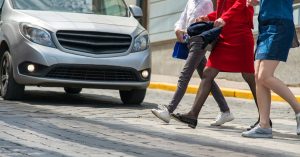
In Massachusetts, traffic is lighter during the COVID-19 emergency, but drivers are being warned to slow down.
During the COVID-19 emergency, Massachusetts residents are getting an unprecedented look at life without traffic congestion. With fewer cars out, there have been fewer accidents. But the drivers who are out have been speeding down open streets. State transportation officials say the high speeds are contributing to traffic fatalities.
The rate of traffic fatalities doubled in April, when traffic dropped by 50 percent on some highways, according the Massachusetts Department of Transportation (or MassDOT). The Boston Globe reported that 28 people died in April, compared to 27 during April 2019, when there was no disruption to traffic.
Speeding and distracted driving have contributed to fatal accidents. According to MassDOT, the fatal crashes resulted in the deaths of drivers, passengers, two motorcyclists and three pedestrians. In Boston, a cyclist was killed by a large truck near Massachusetts and Harrison avenues.
In Boston, Mayor Marty Walsh urged drivers to slow down during his briefing last week. News briefing posted May 1.
“With less traffic, what we’re starting to see is increased speed,” Walsh said. “So the crashes that do happen have been more severe due to the high speed impacts. Even an increase of four to five miles per hour can make a big difference in terms of injuries and possible death.”
The MassDOT did not provide overall crash data for last month. Preliminary data shows two-thirds of crashes happened on local roads.
When traveling in their communities, drivers must remember that they share the road with cyclists and pedestrians. Right now, there are more people out, of all ages. It is essential to stop at crosswalks, yield to pedestrians and drive slowly.
It is also essential to watch for cyclists and practice situational awareness, especially when turning at intersections. Remember that cyclists are allowed to travel in bike lanes, on the right side of the road or in the middle of the lane if necessary for safety. Because cyclists may need to change their lane (for example, to avoid an illegally parked car), it is important to provide cyclists with ample room to make safe decisions.
Just How Slowly Should You Drive?
As a first step, commit to follow the speed limit or travel even slower when necessary. By doing so, you leave yourself more time to stop and prevent a crash before it happens.
It is important to remember that you control your speed and research has found fatal injuries are less likely at lower speeds. Consider a driver who was traveling at 40 mph and hit a pedestrian. There is a 73 percent likelihood that the driver will cause the pedestrian severe injury or death, according to the Vision Zero safety campaign. At 30 mph, the risk for severe injury or death is reduced to 40 percent. At 20 mph, there is a 13 percent likelihood of causing severe injury or death.
Fewer Drivers, Fewer Tickets and Fewer Car Accidents
The Boston Globe reported on Massachusetts traffic activity on April 30th. As the state responds to COVID-19, there has been a dramatic decline in traffic, citations and accidents.
From March 23 to April 26, more than 2,600 car accidents were reported across Massachusetts. 12,000 car accidents were reported during the same period in 2019.
Another measure of driving activity is usually traffic citations or moving violations, such as speeding and parking violations. But during the first three weeks of April 2020, as residents stayed home and law enforcement responded to COVID-19, Massachusetts police departments issued 95 percent fewer tickets for moving violations compared to the same period in 2019.
While traffic remains light overall, Massachusetts State Police have also observed a “significant surge” in drivers speeding more than 100 mph, according to the Globe. Specifically, drivers have also complained about speeding on the MassPike. Now, the agency plans to increase patrols at random times and places.
Breakstone, White & Gluck – Boston Car Accident Lawyers
Free Legal Consultation
Breakstone, White & Gluck represents those who have been injured by the negligence of others in Massachusetts. Our personal injury attorneys provide experienced representation after motor vehicle accidents, including car accidents, truck crashes, pedestrian accidents and bicycle collisions.
Learn your legal rights after an accident. For a free legal consultation, contact Breakstone, White & Gluck. Call 800-379-1244 or 617-723-7676 or use our contact form.
In Somerville, Second Hit-and-Run Pedestrian Crosswalk Crash Claims Life
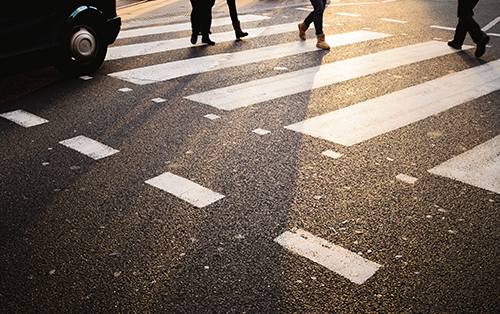
Somerville has seen at least two fatal pedestrian crosswalk crashes during 2019. The news media has reported both were hit-and-run crashes.
A driver was tragically killed in a Somerville crosswalk over the weekend. The victim was struck on Saturday night around 8 p.m. as she crossed along Mystic Avenue (Route 38), near McGrath Highway and Stop & Shop.
The victim, a Somerville resident, was transported from the scene and later pronounced dead at Massachusetts General Hospital (MGH). Meanwhile, Massachusetts State Police began investigating and searching for the driver, who had fled the scene. The 64-year-old Roxbury man turned himself in Sunday morning and was charged with leaving the scene of a crash causing personal injury or death and a crosswalk violation, according to WBZ Boston. He pleaded not guilty at arraignment today in Somerville District Court, where prosecutors revealed a few details about the crash. The driver admitted to drinking two glasses of wine at dinner before the crash and said he initially stopped because he suspected he had hit someone. He was allowed to remain free on $1,000 bail on the condition he refrain from alcohol. He is not allowed to drive.
According to StreetsBlog Mass, the crosswalk is located along Mystic Avenue. It provides pedestrians with access to the Kensington Underpass, which runs under I-93 and connects most of Somerville’s residential neighborhoods to businesses and offices in the Assembly Square district.
This is at least the second fatal pedestrian crosswalk accident in Somerville this year. Both were hit-and-run crashes. In February, a beloved 40-year-old educator was walking in a crosswalk at the Harden Road and Powderhouse Boulevard intersection. She was hit by a truck which never stopped and died from her injuries. Somerville Police had to launch a regional search. Days later, police found the 55-year-old Norwood driver, with help from a Tufts University police officer who spotted the truck parked on University Avenue in Medford. Still damaged, the truck was parked just a mile from the site of the pedestrian hit-and-run.
Tips for Driving Safely Near Pedestrians
Pedestrian accidents are often serious and life-threatening. You have probably heard this before, but drivers really can prevent most pedestrian injuries by slowing down and focusing on the road. Most people drive faster than they realize. According to AAA, when you adjust your speed from 25 mph to 35 mph, you double your risk for causing a fatal pedestrian accident.
Our safety tips for drivers:
- Travel the speed limit or lower when appropriate in neighborhoods and areas near stores and restaurants.
- Travel slowly through parking lots; never cut across parking lots or check cell phones.
- Always stop for pedestrians in a crosswalk.
- Take caution when driving at night.
- Older drivers should have regular vision exams and monitor their driving.
- Watch fatigue.
- Use GPS before you start driving.
- Do not use your cell phone for any reason. Even hands-free technology can be a distraction, especially during the summer months and for night driving.
- Never operate a motor vehicle while intoxicated or while under the influence of marijuana.
- Put down drinks and food.
- Talk to your family. If anyone is ever in an unimaginable situation and has hit a pedestrian or bicyclist, tell them to stop, call police and wait at the scene.
- Leaving the scene is against the law in Massachusetts. If the driver leaves the scene, the victim may not get the medical care they need to survive. Minutes and seconds matter.
Beyond preventing injury, it’s in your best interest to slow down if you don’t want a ticket. More than 40 Massachusetts communities have now established slower, 25 mph default speed limits. Massachusetts sets a 30 mph default speed limit for communities. But under state Municipal Modernization Law passed in 2016, individual cities and towns can opt into a 25 mph speed limit instead in thickly settled areas and business districts. They can also create 20 mph work safety zones. Communities cannot alter speed limits on state roads.
Next time you enter one of these communities, watch for the speed limit signs as you enter. Boston, Cambridge and Somerville are among the communities which have adopted the lower 25 mph speed limit. The City of Somerville implemented a 25 mph speed limit citywide as soon as the state law took effect back in 2016. It also pursued 20 mph limits in work safety zones.
Breakstone, White & Gluck – Free Legal Consultation
Breakstone, White & Gluck is known for our extensive experience handling personal injury cases and our superb results for those injured and their families throughout Massachusetts. We invite you to learn about our results after pedestrian crashes.
Our Boston personal injury attorneys specialize in representing those injured in pedestrian accidents involving crosswalks and other pedestrian car accidents. If you have been injured, it is critical to learn your legal rights for seeking compensation and learn about the process ahead. For a free legal consultation, contact Breakstone, White & Gluck at 800-379-1244 or 617-723-7676 or use our contact form.
Are You Riding in a Recalled Uber or Lyft Vehicle?
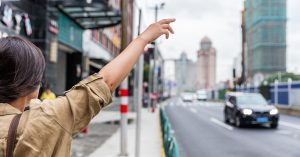 A new report says Uber, Lyft and their drivers should move to fix auto recalls quickly. What actually happens is far different in many cases.
A new report says Uber, Lyft and their drivers should move to fix auto recalls quickly. What actually happens is far different in many cases.
In New York and Seattle, one in every 6 rideshare vehicles registered for Uber and Lyft has an open safety recall on it, according to Consumer Reports. This means while a vehicle has been recalled, the driver continues to operate it and carry passengers without addressing the broken parts. Some of the recalls, such as those involving Takata airbags, have been associated with serious car accidents and injuries. Others involve defective seat belts or the potential for car fires or engine failure.
Consumer Reports reviewed safety records for 94,000 rideshare vehicles registered to Uber and Lyft in New York City and King County, Washington, where Seattle is located. Some drivers work for more than one company, so the consumer website grouped them together and also included some data for smaller competitors.
Consumer Reports called for stronger safety recall laws and says rideshare vehicle defects should be repaired promptly to protect the public from car accidents and injuries.
When shown the data, Uber’s response was that it “encourages and reminds” drivers to have recalls fixed. The company said it blocks certain vehicles from using its platform if there is a “DO NOT DRIVE” warning from the manufacturer or the National Highway Traffic Safety Administration (NHTSA). Uber also participates in the NHTSA’s twice-a-year campaign to raise awareness about addressing auto recalls.
Lyft’s response was rideshare drivers, by using their personal vehicles, are representing that their cars meet safety standards. It went on to say drivers have a “strong personal incentive” to repair their vehicles since they are used for work and in their personal lives, “driving their kids to school or friends around town.” The company said it works with lawmakers, regulators and local officials to develop safety regulations.
Safety Tips for Rideshare Passengers
Use an App to Check For Recalls
Consumer Reports suggests consumers check for auto recalls using the myCarfax app. Once you book your Uber or Lyft, you will receive the vehicle’s license plate. Type that number into myCarfax to check if the car has a safety recall.
Avoid the Front Seat
You can also avoid the front passenger seat. Rideshare drivers may still be operating with defective Takata airbags. Takata and auto manufacturers have spent years recalling millions of airbags because they have the potential to explode and cause traumatic and deadly injuries. Around the world, 24 people have been killed and hundreds of people have suffered injuries.
The Takata recall repairs have been slow at times. The NHTSA has announced the recalls in increments and there have been delays in delivering new airbags to local car dealers at times. But rideshare drivers and the companies have a greater responsibility to address safety recalls because they provide transportation to the public.
Monitor the Model Year of Your Uber
Consumer Reports observed a number of Lyft and Uber vehicles operating even though they didn’t meet the vehicle age requirements set by the rideshare companies or states and cities. This isn’t exactly an auto part recall, but it is closely related. Cars should have expiration dates. An aging vehicle can put rideshare passengers at risk.
The next time you are in a Lyft vehicle, remember the company requires Massachusetts drivers to use vehicles which are 2003 or newer; vehicles should be 2004 or newer on Cape Cod, Springfield and Worcester. Read the Lyft application checklist. As for Uber, the company requires vehicles to be 15 years or newer. Read the Uber vehicle requirements.
Report Any Safety Issues
If you use a rideshare vehicle and observe safety risks, take a photo and report your concern to the rideshare company or local police.
About Breakstone, White & Gluck
With more than 100 years combined experience, our Boston personal injury lawyers specialize in representing individuals who have suffered catastrophic injuries in car crashes, commercial truck collisions and Uber and Lyft accidents. Breakstone, White & Gluck is experienced at filing successful claims against both the major rideshare companies.
Learn your legal rights if you have been injured. Call our law office for a free legal consultation today: toll-free 800-379-1244 or 617-723-7676 or use our contact form.
Expect Traffic Enforcement As Students Head Back to School in Massachusetts
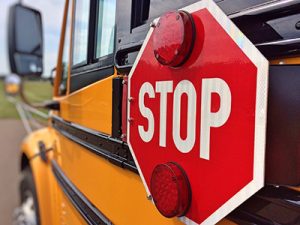
With students back to school in Massachusetts, local police departments are stressing safety around school buses while stepping up enforcement of drivers who fail to stop for pedestrians in crosswalks.
If a traffic enforcement sting came to your community, how many drivers would be stopped and cited for unsafe driving? Would you be among them?
We ask these questions as students head back to school across Massachusetts, in communities from Boston and Cambridge to Plymouth and Brockton to Worcester and Springfield.
Police departments across the state have set up traffic enforcement over the past few weeks, focusing on drivers who are not stopping for pedestrians in crosswalks and school buses. A few of the communities include New Bedford, Attleboro and South Boston.
In South Boston, the surveillance followed the tragic death of a 2-year-old in a traffic crash. The child was being pushed in a stroller on the sidewalk, when a van and car collided. The van plowed onto the sidewalk, injuring and ultimately killing the young boy. A day after the crash, the Boston Police Department and Massachusetts State Police set up a traffic enforcement initiative focusing on crosswalk enforcement, speeding and other unsafe driving behaviors. Within a few days, officers had issued approximately 500 citations for traffic violations. This is a very telling number, one Massachusetts drivers can’t ignore.
Breakstone, White & Gluck is a Boston law firm which specializes in personal injury, medical malpractice and car accident cases. Our firm is committed to safety for children, giving away over 20,000 bicycle helmets to children in Massachusetts through our Project KidSafe campaign. With experience representing clients who have been injured in pedestrian crosswalk accidents and other traffic crashes, we offer these tips for safe driving:
Slow down at crosswalks. Students who walk to school may have a crossing guard help them across the street. Always slow down as you approach crossing guards and children. Make eye contact with the crossing guard and assume you should stop. The crossing guard will wave you through when it’s safe to go.
But even when there is no crossing guard, drivers must stop for pedestrians in the crosswalk when there is a “Walk” or green signal. Other times, drivers have a responsibility to yield the right of way by slowing or stopping for pedestrians in the crosswalk. This includes times when pedestrians are in the crosswalk on the same side as the driver and when pedestrians are approaching from the other half of the lane and within 10 feet. There is a $200 fine for crosswalk violations in Massachusetts.
The best thing to do is approach crosswalks slowly and stop if you see anyone even near the entrance of the crosswalk. If you can, make eye contact with them, then wave for them to go. Depending on whether other cars stop, they may not be able to immediately cross. You may need to be patient for a few moments.
M.G.L. c.89 § 11 is the law governing pedestrian rights in crosswalks in Massachusetts. Read more about the law.
Hit and Run Crashes Reach Record High; Cyclists and Pedestrians Suffering Nearly 65 Percent of Injuries
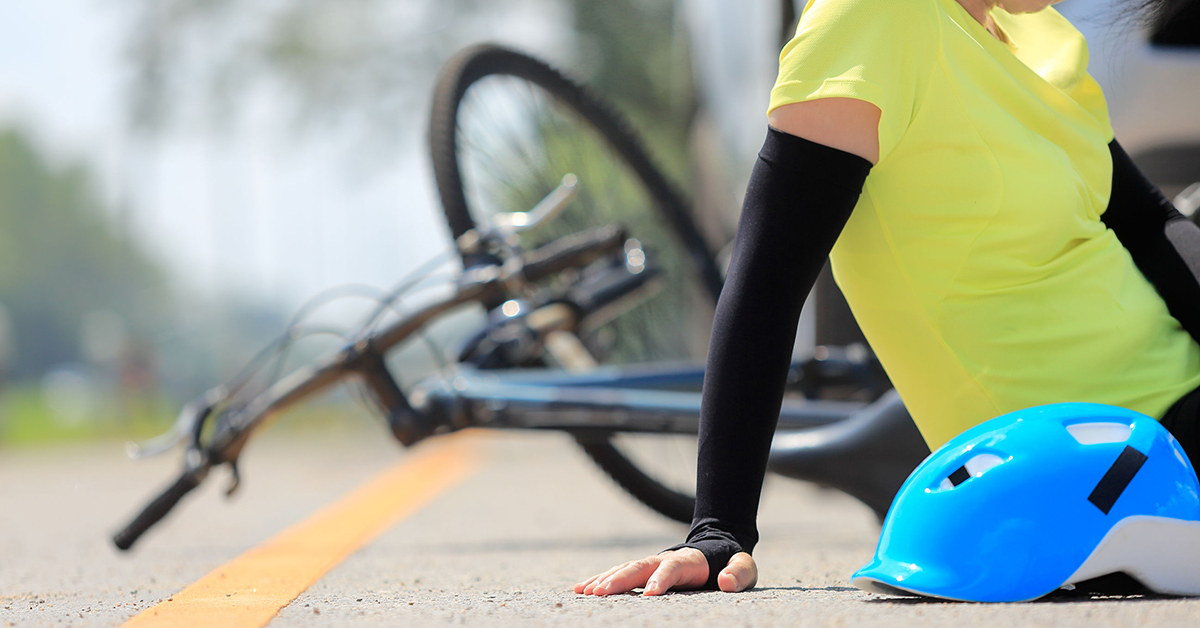 National Bike Month is a time to celebrate and champion cycling. If you live in Massachusetts, you know the cycling spirit is stronger than ever. But that doesn’t mean conditions are always safe.
National Bike Month is a time to celebrate and champion cycling. If you live in Massachusetts, you know the cycling spirit is stronger than ever. But that doesn’t mean conditions are always safe.
In fact, cyclists and pedestrians are at a higher risk now than ever. The National Highway Traffic Safety Administration reports cycling deaths increased 11 percent from 2015 to 2016. Pedestrian deaths rose 9 percent. The AAA Foundation for Traffic Safety recently weighed in with a report on hit and run crashes. The numbers show the toll on pedestrians and cyclists, as well as others on the road.
- There is now more than one hit and run crash every minute in the U.S.
- Nationwide, fatal hit and run crashes have been increasing since 2009, reaching an all-time high in 2016. Some 2,049 people were killed.
- In nearly 65 percent of cases, pedestrians and cyclists were killed.
- All 50 states have hit and run laws, which make it illegal for drivers to leave the scene of an accident.
- According to the Telegram & Gazette of Worcester, there were 186 hit and run crashes involving death in Massachusetts over the 10-year period from 2006 to 2016.
In Massachusetts, leaving the scene of an accident is against the law, under M.G.L. c. 90 § 24 and M.G.L. c. 90 § 26. Drivers can face potential jail time for leaving the scene of a car accident resulting in property damage, even if there is no injury. When there is injury and death, drivers face higher penalties, including up to 10 years in jail if someone is killed.
Beyond the punishment, drivers have a moral obligation to stay at the scene, make sure the victim receives medical attention and help police with their investigation. When they flee, victims have to wait for medical care and the delay could cost them their lives.
In Massachusetts, just in the past month, several pedestrians have been killed by the negligence of hit and run drivers.
In Medford, a real estate agent was walking along Spring Street, when she was fatally struck by a teen driver who was allegedly under the influence of a drug, according to Boston 25 News. The teen – who was operating with a learner’s permit – kept going, then collided with two other people. They were injured, but survived. Their dog was killed in the crash.
Police also responded to tragedies in Lawrence and Revere. In Revere, a woman was struck while walking on Revere Beach Parkway. As she was treated for critical injuries, police searched for the driver. Police in Lawrence made the arrest in a hit and run crash that seriously injured a 30-year-old woman. The 24-year-old driver is accused of operating under the influence when he crossed an intersection, hitting the woman in a crosswalk.
Along with motorists, truck drivers cause an increasing number of hit and run crashes each year. Cyclists and pedestrians can be cut off by trucks and swept under, causing catastrophic injuries and deaths. In Massachusetts, bicycle advocacy groups have pushed for legislation requiring trucks to be outfitted with sideguards. The City of Boston has passed its own truck sideguard regulations.
Drivers who operate rideshare vehicles, such as Uber and Lyft, taxicabs and buses can also cause hit and run crashes. Hit and run crashes can also be caused by teenage drivers, who have less experience and have higher accident rates than other drivers.
As a driver, the best thing you can do is commit to pay attention on the road and travel slowly, giving yourself more time to respond. Turn your cell phone off. Follow traffic laws and look for cyclists and pedestrians on the side of the road. Take special care not to cut cyclists off when turning at intersections. When fatigued, do not drive. Finally, if you are in an accident, do not run. Help the victim by calling 911. That has to be the priority.
About Breakstone, White & Gluck
With more than 100 years combined experience, the lawyers of Breakstone, White & Gluck are experienced in representing cyclists and pedestrians who have been injured in motor vehicle and truck crashes. Our attorneys represent clients throughout Massachusetts, including in Boston, Cambridge and Quincy. We are known for our prompt investigation and aggressive representation for our clients. If you have been injured, learn your rights. For a free legal consultation, call 800-379-1244 or 617-723-7676. You can also use our contact form.
Attorney Reza Breakstone: “The Self Driving Car: Science Fiction Becomes Reality, Creating a Legal Quandary”

Attorney Reza Breakstone of Breakstone, White & Gluck in Boston.
A self-driving Uber vehicle has been involved in a fatal pedestrian crash in Arizona. Attorney Reza Breakstone’s article explores liability when self-driving cars crash: https://tinyurl.com/y8qrfs69.
Ford Recall: Drivers Say Steering Wheels Have Come Off While Driving On Highway

Attorney David W. White specializes in personal injury and product liability cases at Breakstone, White & Gluck of Boston.
Ford drivers are gripping the steering wheel anxiously after the automaker’s stunning safety recall this week. 1.4 million Ford vehicles have been recalled because the bolts on the steering wheels can become loose. Ford will repair the vehicles, but not until the end of April at least.
“This recall is very upsetting,” said Attorney David W. White of Breakstone, White & Gluck. “Nothing is more basic to a car than a steering wheel. Automakers have a responsibility to fully test vehicles and all equipment before bringing them to market. They continue to fail drivers.”
This recall affects 2014-2018 models of the Ford Fusion and the Lincoln MKZ. According to Consumer Reports, Ford’s customer-service phone number is 866-436-7332 and Lincoln’s customer service phone number is 800-521-4140.
Ford has said it will replace the steering wheel bolt and install a larger nylon patch to maintain pressure. A company spokeswoman said consumers will be notified by mail the week of April 30th.
In announcing the recall, Ford said it was aware of two car accidents related to the defective steering wheels, one involving injury. This is not the full story though. After reviewing federal records, USA Today reported the National Highway Traffic Safety Administration has received more than 45 reports of the steering wheels becoming loose or falling off, some resulting in car crashes.
One driver said the steering wheel on his 2014 Ford Fusion became unstable and he drifted into a manhole, destroying his vehicle. Others said they had the frightening experience of having steering wheels come loose as they drove down the highway. One driver said all he did was bump the steering wheel with his knee and it came off.
Once a manufacturer determines there is a safety defect, it has 5 days to notify the NHTSA. Automakers are then responsible for recalling defective motor vehicles or equipment.
Americans may associate Toyota, General Motors and Takata with most auto recalls. Yet Ford has made its own headlines for safety defects. Last year, it recalled 1.3 million F-150 Super Duty pick-up trucks with faulty door latches last year. Consumers reported the doors were swinging open while the vehicles were in operation. It also issued smaller recalls fixing more door latches and to stop cars from overheating. The company had received 29 reports of engines overheating and catching fire in some vehicles with 1.6-liter GTDI engines.
At Breakstone, White & Gluck, our Boston personal injury lawyers have investigated serious car and truck crashes caused in part by defective parts. We have over 100 years combined experience representing individuals injured by car crashes, truck accidents and other traffic collisions in Boston and throughout Massachusetts. Many of our car accident and other personal injury cases involve product liability claims and investigation into dangerous and defective products.
| Highlighted Cases | |
|---|---|
| $3 Million Settlement in Tractor-Trailer Crash Breakstone, White & Gluck negotiated a $3 million settlement for our client, who was hit by a tractor-trailer truck owned and operated by a beverage distributor. Read more about the case and the investigation of the truck. |
|
| $1.15 Million Settlement in Defective Fitness Equipment Injury Breakstone, White & Gluck negotiated a $1.15 million settlement for our client who was seriously injured while using defective fitness equipment at a local gym. The trainer who was supervising our client was also negligent in a number of ways. Read more. |
|
Contact Breakstone, White & Gluck
If you have been injured, learn your rights. For a free legal consultation, contact our Boston personal injury lawyers at 800-379-1244 or 617-723-7676 or use our contact form.


